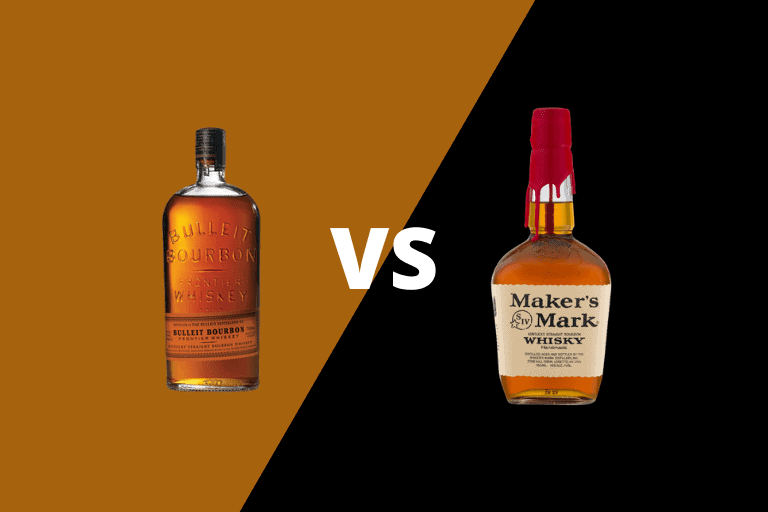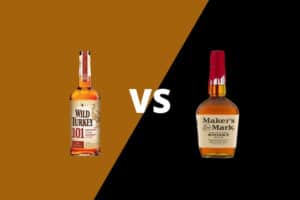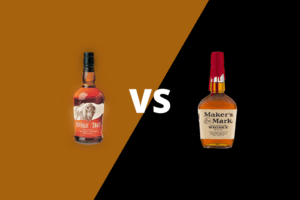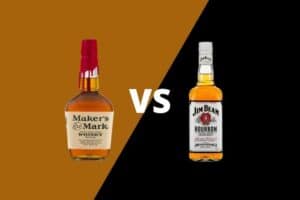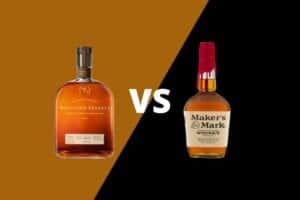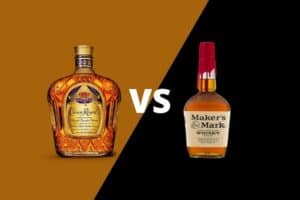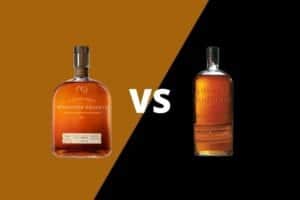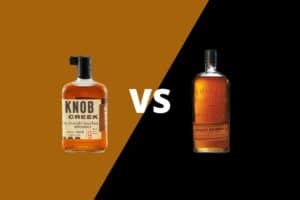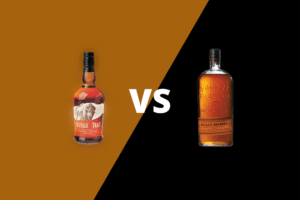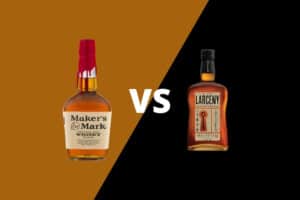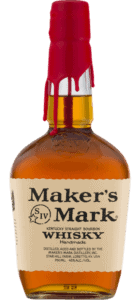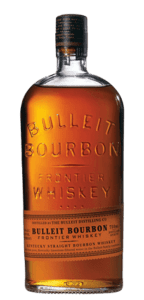Maker’s Mark and Bulleit.
These two iconic bourbon brands were instrumental in the whiskey renaissance that began in the 2000s. And they both continue to spur growth in the category to this day.
Each brand has a distinct bottle and label, easily recognizable from across the room — even in the most crowded tavern. They are both fan-favorites, sure to spark a lively debate over which is best.
Whether you are a bourbon geek, a new whiskey convert at the beginning of your distilled spirits journey or the bartender or on-premise manager looking to learn more about the products behind the bar, it’s worth exploring a little more about these two top-selling brands.
So let’s get to it! Grab a glass and let’s take a look at these two excellent Bourbon whiskeys in a side-by-side showdown.
Table of Contents
Round 1: History
This matchup is a bit of a family feud.
Both of these brands were founded as family-owned businesses and continue to have family involvement to this day. So, this is a competition between two well-known bourbon families: the Samuels vs. the Bulleits.
In 1954, Bill Samuels, Sr., decided to purchase a distillery in Loretto, Kentucky. It has always been a family affair. Bill’s wife, Margie, was credited for coming up with the brand’s unique look — bottle shape, label, wax seal and insignia — while Bill came up with the signature wheated recipe. Bill Samuels, Jr., took over the distillery after his father retired. Today, third-generation Rob Samuels is chief operating officer of the brand.
Bulleit Bourbon is named after founder Thomas Bulleit, Jr., who created the brand in honor of his great-great-grandfather Augustus Bulleit, a distiller in the 1830s. The Bulleit brand was first introduced in 1987. Thomas Bulleit continues to act as spokesman for the brand. Unfortunately, the family has weathered infighting. Recently, Thomas’ daughter and former brand ambassador Hollis Bulleit has aired some serious allegations against the family.
Round 1 goes to Maker’s Mark. The 30-year lead gave the Samuels a considerable head-start on laying down barrels.
Round 2: Ownership
Bulleit is owned by Diageo, the largest spirits producer in the world. Diageo is headquartered in London, England.
Maker’s Mark is owned by Beam-Suntory, the third-largest spirits producer in the world. Beam-Suntory is headquartered in Chicago, Illinois, and is a subsidiary of Tokyo-based Suntory.
Round 2 is a draw. In both cases, global supply-chain logistics and economies of scale allow these brands to offer world-class whiskey at an affordable price point.
Round 3: Mashbills
This matchup is a contest between wheated and high-rye bourbons.
In order to carry the term ‘Bourbon’ on the label, a whiskey must be produced in the United States from a mash of fermented grains and contain at least 51 percent corn in its mash ingredients.
Distillers have their choice on how they want to round out the mash bill. Nearly all bourbons have a percentage of malted barley to promote enzymatic activity during fermentation. But it’s that final secondary grain where these two brands diverge.
As a wheated bourbon whiskey, Maker’s Mark uses soft red winter wheat as its primary flavoring grain. Bulleit, on the other hand, uses spicy rye grain as its predominant flavoring grain. This small change results in dramatically different flavor profiles in the resulting products.
Round 3 is a wash — no pun intended. The choice between high-rye and wheated bourbons is a debate among bourbon distillers — and bourbon aficionados — that goes back generations.
Round 4: Maturation
In order to carry the term ‘Bourbon’ on the label, a whiskey must be produced in the United States and matured in new charred American oak barrels. And, to carry the designation ‘Straight Bourbon’ on the label, a whiskey must be matured for no less than two years.
But that’s all we have to work with by looking at either label. While each bourbon could undoubtedly choose to put an age statement of over two years based on their mature flavor profiles, we cannot be sure of either of these products’ exact age based on the label alone.
Round 4 is a draw. We know each is aged for at least two years, but each batch’s exact age is a mystery.
Round 5: Distillation & Production
Both of these products are made using modern distillation techniques — including column distillation.
Maker’s Mark has been produced at its Loretto, Kentucky, distillery since 1954. Today, the site is called Star Hill Farm, but it operated for decades as the Burk’s Distillery before Bill Samuels, Sr., purchased it.
Today, Bulleit is distilled at the Bulleit Distillery in Shelbyville, Kentucky. The distillery opened in 2017. But before that, the production of Bulleit was a bit of a taboo in the whiskey world. For decades, Diageo did not operate a distillery in the United States, so the brand acted as a Non-Distiller Producer, or NDP. For years, the source of the whiskey was a hotly-debated topic between bourbon fans.
A lively discussion has broken out at the judges’ table at the end of Round 5. While Bulleit is distilled on-site today, some barrels used in the current blend may have been distilled off-site.
Round 6: Price Point & Value
Bulleit Bourbon will set you back about $31 for a 750mL bottle. It is bottled at 90-proof, or 45 percent alcohol by volume.
Maker’s Mark retails for about $30 for a 750mL bottle and is bottled at 90-proof, or 45 percent alcohol by volume.
For two delicious Kentucky Straight Bourbon Whiskey premium offerings, a $1 difference is a bit trivial.
Round 7: Tasting Notes
Bulleit Bourbon
Nose: Bold aroma of charred oak, with spicy rye notes, vanilla, honey and caramel.
Palate: Buttery mouthfeel, with vanilla, butterscotch and a hint of maple syrup.
Finish: Vanilla and baking spices, with lingering almond notes.
[Related: Complete Bulleit Bourbon Review]
Maker’s Mark Bourbon
Nose: Charred oak and cherry aromas, with honey, soft wheat and malted cereal notes.
Tongue: Sweet honey, vanilla, maple syrup and almond flavors.
Finish: Lingering maraschino cherry, chocolate, clove and baking spices.
[Related: Complete Maker’s Mark Bourbon Review]
Verdict…
The age-old debate continues. Which type of bourbon is better — wheated or high-rye?
Ultimately, the choice is yours. If you like sweeter bourbons, give Maker’s Mark a try. If you prefer a bold bourbon, reach for Bulleit.
Bulleit and Maker’s Mark represent two of the best-selling premium American whiskeys, both domestically and abroad. You are just as likely to find these brands behind a respectable whiskey bar in Kentucky as you are a dram shop in London. Each is a phenomenal representation of the Kentucky Straight Bourbon Whiskey category.
In fact, a side-by-side tasting of these two whiskeys is an excellent way to explore all the flavors bourbon has to offer.

